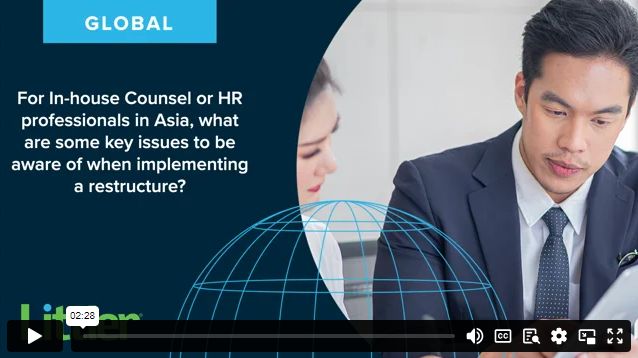For In-house Counsel or HR professionals in Asia, what are some key issues to be aware of when implementing a business restructure?
There are some key areas you will want to focus on when restructuring a business operation in the APAC region.
First, consider the jurisdiction and its challenges. People often think that the EU is the most challenging place to conduct restructures and RIFs. But the APAC region has some of its own "hot spots" with similar challenges.
A good first step in approaching a restructure is to inventory the legal requirements by country to ensure that any required processes, consultations, and timelines are known and built into your project plan.
Then, determine whether the business restructure involves matrixed operations, where business teams report to multiple leaders. If you have a matrixed organization where functional teams are in several countries, look out for actions taken in a more flexible jurisdiction, such as the U.S., Hong Kong or Singapore, that may have an impact in a more procedurally heavy country such as Mainland China, Vietnam, Japan, Korea, or Malaysia.
For example, before you lay off or redeploy the U.S.-based team members, make sure this action doesn't result in the rest of the team being constructively terminated because they cannot function in their roles without the part of the team that was dismissed.
So what types of procedures can be challenging?
Some employees may be protected from termination, not just protected from discrimination based on their protected status. In light of this, your organization may consider doing an inventory of these protections and check for them. For example, there may be protections for those undergoing medical treatment, are pregnant or have recently given birth, may be close to legal retirement age, or may be an employee representative.
Other requirements in some APAC countries include:
- mandatory filings
- consultation with employees or their representatives
- government consent, and
- social plans
These are similar to requirements in Europe.
The content of this article is intended to provide a general guide to the subject matter. Specialist advice should be sought about your specific circumstances.



